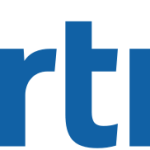- Industry: Consulting
- Number of terms: 1807
- Number of blossaries: 2
- Company Profile:
Gartner delivers technology research to global technology business leaders to make informed decisions on key initiatives.
3D photovoltaic (PV) devices employ a 3D structure to improve photoelectric efficiency by increasing the amount of light captured by the light-absorbing material in the PV cell or panel. By comparison, conventional solar cells consist of a 2D planar diode structure. By utilizing a 3D design, the surface area available for light absorption is increased, and some designs incorporate nanostructures such as wells, towers or nanotubes intended to trap photons, increasing the proportion that impart their energy to the PV cell. Once the sunlight strikes the 3D solar panel, the 3D design will trap the sunlight and help bounce the photons (many times) until they have been fully converted into electrons and hence usable electricity. 3D solar cells may also include features intended to reduce the rate of recombination of electron-hole pairs. 3D PV technology can also improve solar cell performance by reducing light reflection. 3D PV technology has the potential to produce much-higher-efficiency PV cells, panels and systems; however, it is still too early to determine what the real-world efficiency will be. The key challenge for commercialization of this technology will be developing a low-cost manufacturing process that can translate the efficiency gains into lower-cost solar electricity.
Industry:Technology
Two technologies are currently used to show 3D images on the majority of flat-panel TVs and displays: polarization 3D, which uses a pattern retarder and polarized glasses and is only offered by a small number of display manufacturers; and alternate-frame sequencing, which uses active shutter glasses and requires high refresh rates on displays. Autostereoscopic displays, which use lenticular lenses or parallax barrier technology built into the display panel, and which do not require glasses to view the 3D effect, are used primarily in digital signage and have limited appeal in the consumer market.
Industry:Technology
Three-dimensional bioprinting is a medical application of 3D printers. It is a system directed by medical imaging data and software that specifies the design of living tissue and organs, plus the printing device to create a functioning human organ from an individual’s own or other cells.
Industry:Technology
A broad term referring to enhancements that provide high-speed data extensions to 3G (wideband code division multiple access (WCDMA)) that go beyond the 384 Kbps downlink and 64 Kbps uplink provided by basic WCDMA. The term 3.5G covers technologies such as High-Speed Downlink Packet Access (HSDPA), High-Speed Uplink Packet Access (HSUPA) and HSPA+.
Industry:Technology
2D bar code marketing is an identification method that can be created and printed on marketing materials, such as ads, brochures and product packages, through specific service providers or freely available websites. More commonly known as quick response (QR) codes, people scan these bar codes with a camera-equipped phone to access information such as websites and product details, or they download content such as coupons and business cards onto mobile devices.
Industry:Technology
Enhancements that provide packet data capabilities over 2G networks. 2.5G improves the available data rates supported by the air interface, thereby permitting the introduction of new, data-oriented services and applications. The increased data rates rise to a theoretical maximum of 384 Kbps, although in the field available data rates may often be as low as 20 Kbps. General packet radio service (GPRS) is an example of a 2.5G technology.
Industry:Technology
10 Gbps passive optical network (10G-PON) is a next-generation solution following the current-generation gigabit passive optical network (GPON) (ITU-T G.984) and Ethernet passive optical network (EPON) (IEEE 802.3ah) solutions, basically offering higher bandwidth and additional features. Like its predecessors, 10G-PON will allow multiple users to share the capacity over a passive fiber-optic “tree” infrastructure, where the fibers to individual users branch out from a single fiber running to a network node. In September 2009, the Institute of Electrical and Electronics Engineers (IEEE) approved 802.3av as a 10G-EPON standard, including both 10/1 Gbps and symmetrical 10 Gbps implementations. In October 2010, the International Telecommunication Union (ITU) approved the ITU-T G.987.1 and G.987.2 10G-PON standards with asymmetrical and symmetrical implementations.Asymmetrical 10G-PON (specified by the Full Service Access Network (FSAN) as XG-PON1) provides 10 Gbps downstream and 2.5 Gbps upstream. Symmetrical 10G-PON (specified by FSAN as XG-PON2) provides 10 Gbps both ways.10G-PON uses different downstream and upstream wavelengths (1,577 nanometers (nm) and 1,270nm respectively) to those used by GPON, so that both systems can coexist on the same fiber architecture. This allows communications service providers (CSPs) to supply GPON services to the majority of their subscribers, while providing higher-bandwidth 10G-PON to premium subscribers, such as enterprises, or for the deployment of broadband to high-density multidwelling units.
Industry:Technology
